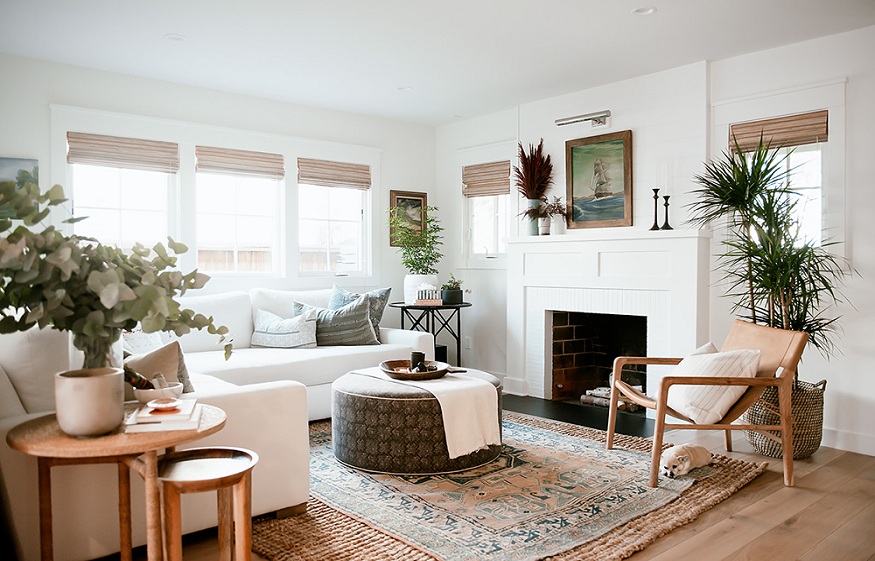There are beautiful things in every part of life. If you don’t work in the field already, you might find the subject matter boring or hard to understand. But the way things are set up is an important part of our daily lives. The future is designed, just like our homes, clothes, and cars. The first group of things on the list are meant to make our lives easier and more comfortable. The second group is also related to the idea of being able to do something for a long time. The goal is to meet both current needs and those of people who will come after us.
What is Sustainable Design?
To understand how important a sustainable design is, you need to do a little bit of thinking. In this way, terms like eco-friendly design, eco-design, and environmentally conscious design can all be used in a circular way to talk about sustainability, which aims to get rid of things that hurt the environment. With eco-friendly home design and decor, you can cut down on your carbon footprint. The main goal of eco-friendly architecture is to make as little waste as possible. Make sure the place is healthy. Less should be done with resources that can’t be replaced. But green design is not the same as sustainable design. It is important to make designs that solve current problems and think about what might happen to people in the future. Sustainable design as a whole is a way to protect the environment that looks at the big picture. Green design, on the other hand, is more focused on a specific topic and sub-specialty. It is most often linked to sustainable architecture. The main goals of sustainability are reducing the use of limited resources, cutting down on waste, and making environments that are healthy and productive. Sustainable design is worth looking into because it is hard and important in 2018. This book will show you how to decorate your home in a way that is better for the environment. Need ideas for your bed? Check out some ideas on Slingo.com.
1. Energy Efficient Design
The use of energy is a big cause of global warming and other problems with the environment. Buildings use a lot of energy, which is a major cause of global warming. Architects and interior designers can do a lot to improve the energy efficiency of a building by using less energy for heating, lighting, running appliances, etc. and by giving the building energy that doesn’t come from carbon. Most of the time, interior designers have the most say over how a space is heated and lit. Most heat is lost through the windows, so they need to be of high quality and have good insulation. Drapes and curtains should be insulated against sudden changes in temperature and the sun’s heat. Changing the temperature inside a building is easy and cheap when you close and open blinds, shades, and other window coverings. Because they are so good at insulating, carpets can keep up to 10% of a room’s original heat. For example, rooms with lighter walls and furniture reflect more light, while rooms with darker walls and furniture need more artificial lighting. Choosing the right colors can help you save energy and money. Reflective surfaces should be used to cut down on the need for artificial light. Home automation, also called “green gadgets,” lets you control the temperature and lighting in your home from anywhere in the world. Dimmers, which are part of home automation systems, are perfect for places like dining rooms and living rooms where the amount of light needs to be changed. They can also help residents and people who live in the building save money and energy.
2. Waste Reduction Management
Interior designers have a lot of power when it comes to reducing waste, which they should use to their advantage for the sake of the environment. Because the Earth’s resources are limited and valuable, it’s no longer okay to think that we can just throw away things when they go out of style and buy new ones that are in style now. People are becoming more aware of the need for sustainable practices like recycling, upcycling, and reusing as they become more popular. The way of the future is to find new uses for things that are now considered old instead of throwing them away. Choose synthetic materials that were made with recycled waste or that can be renewed or recycled when they are no longer useful. This will help keep resources from running out. By using waste to make new products, we can close the manufacturing loop and cut down on or get rid of waste completely.
3. Durability and Felixibility in Design
The people who design places to live should think about how long different parts will last before they need to be replaced. Especially when it comes to the parts that get used and abused the most. Focus on making things that will last. As people get older and more experienced, they want their living spaces to get older and more experienced with them. Designers should keep in mind how important it is for interiors to be able to change to meet the needs of the people who live there. Creating layouts that can be changed can make something last longer. If you want to make something that will last, you should put quality over quantity, classics over trends, and functionality over frills. Modular walls, adjustable and modular furniture to meet the needs of a modern workplace (work from home is now the norm), modular flooring that lets you make it your own, and so on are all examples of how innovation has made flexible design even better. When you use materials that are made to last and are easy to clean or replace when they wear out, you can spend less on repairs and renovations.
4. Reducing Environmental Impact
In terms of sustainability, the materials and goods that have the least impact on the environment should be given the most attention. Care must be taken with natural resources, and this includes organic materials, which might seem like an obvious choice (such as wood, wool, and natural stone). If you care about your environmental footprint, choose renewable resources (like bamboo) that are taken from the earth in a sustainable way. An overall assessment of the materials and goods must take into account every step of the process, from mining and making to distributing and getting rid of.
5. Health Eco-system Design
Since there is a pandemic going on right now, most people stay inside. Several things, like the quality of the air, heating, ventilation, lighting, and sound, affect how healthy an interior is. Products and materials that give off toxic fumes are the main cause of air pollution inside. For example, furniture and appliances that have been treated with chemicals can give off fumes that can cause cancer. Designers should be careful when they choose the materials they use. When it comes to the quality of the air inside, it’s best to use materials that don’t give off a lot of VOCs and other air pollutants. Contrary to what most people think, carpets are just as good as plants at keeping the air clean and circulating it properly. Contrary to what most people think, carpets improve the quality of air inside by collecting dust, bacteria, and allergens from the air and holding them until they are vacuumed up. Carpets are also great at blocking sound and making rooms quieter by absorbing vibrations from the floor. How should you plan for your virtual office if there is a pandemic? Many people now have to work from home because of the global pandemic. Also, there would be interior design trends that tried to give people a “sense of the outdoors.” This is especially important for homes and other places in the house where people work, because natural light makes people less stressed and more productive, which is good for their physical and mental health. In fact, being close to natural things can make you feel calmer.




